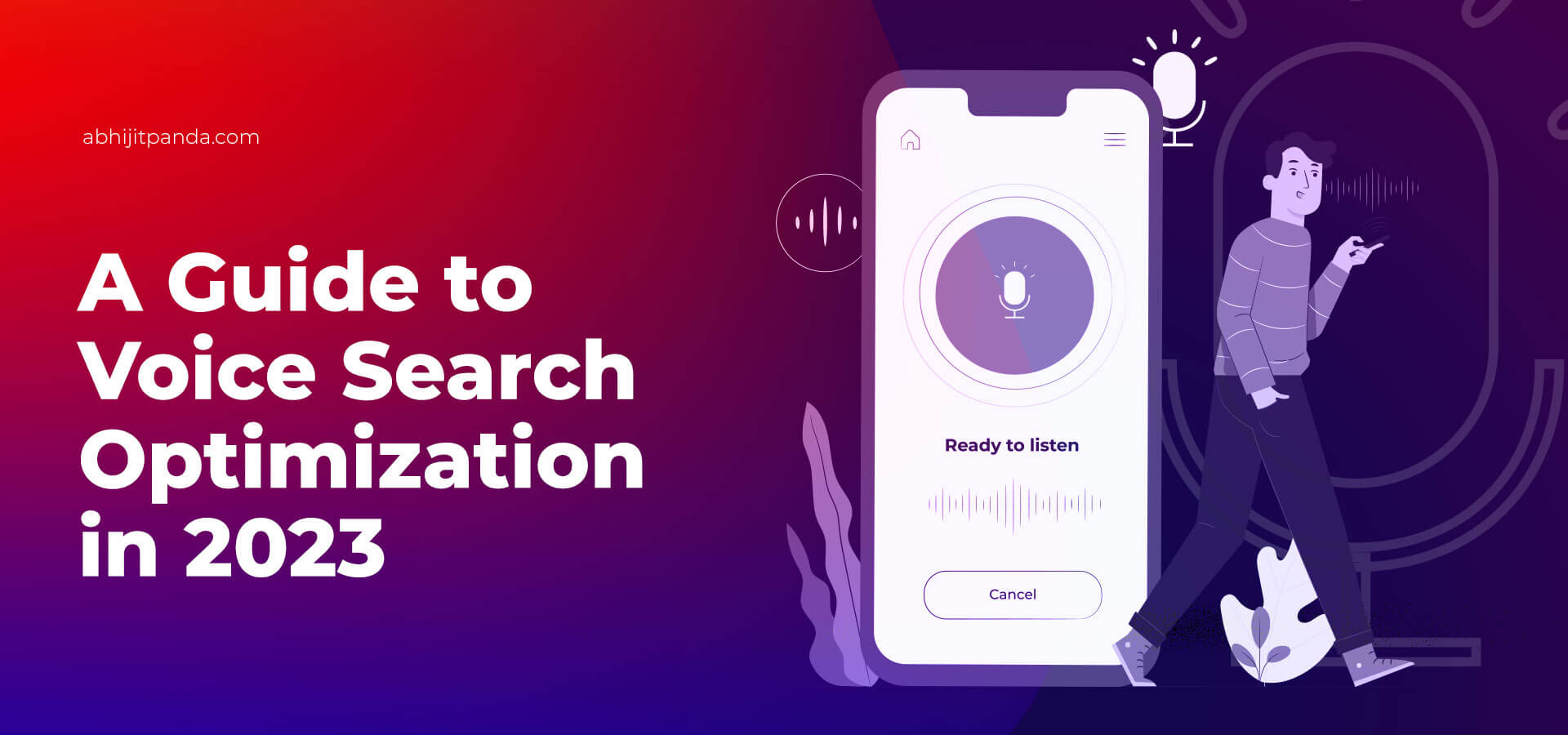 A Guide to Voice Search Optimization in 2023
A Guide to Voice Search Optimization in 2023
While finding information on the web, searchers these days prefer using smartphones and tablets to desktops and laptops. Younger searchers prefer finding online information using voice search, while older searchers still use text search while searching the internet. However, a surge is being noticed in searchers belonging to various age groups who prefer giving voice commands to typing search queries.
Why Optimize Website Content for Voice Search in 2023?
Smartphones with voice search features and voice-controlled virtual assistants make it easier for users to find information simply by giving a voice command. The voice search statistics compiled by StartupBonsai suggest that 56% of users have already used voice search for finding information about a business.
Likewise, 52% of voice search users expect brands to deliver information related to promotions, deals, and sales. That is why; your SEO strategy can get better results in 2023 only by focusing on text search and voice search simultaneously. In addition to implementing on-page and off-page SEO techniques, you should focus extensively on voice search optimization in 2023.
How to Optimize Website Content for Voice Search in 2023?
While optimizing website content for voice search, you should keep in mind the major differences between voice search and text search. For instance, voice search devices respond to a searcher’s voice command by providing a single answer. Hence, they focus on finding the best answer to the question asked by the searcher instead of listing search results.
Furthermore, voice search results, unlike text search results, are highly location-dependent. Hence, you should not optimize website content for voice search using widely-used search engine optimization (SEO) strategies.
Instead, you should complement your regular SEO strategy in 2023 with comprehensive voice search optimization strategies. Here is a slew of voice search optimization best practices that will help you create and update website content for voice search in 2023.
9 Voice Search Optimization Best Practices to Adopt 2023
1. Boost Your Website’s Mobile Experience
You should remember that most voice search users use smartphones or tablets. Hence, your voice search optimization strategy needs to ensure that your website delivers a superior mobile experience across mobile devices and operating systems. It is always advisable to make the website accessible on computers and mobile devices by adopting a responsive web design or using Google’s Amplified Mobile Pages (AMP) guidelines. At the same time, you should conduct speed tests regularly to ensure that the website loads in less than 2 seconds.
2. Understand Customer Behavior
Consumers initiate voice searches using a variety of devices. Some consumers use search engines, while others use AI-driven voice assistants. Hence, you can create and optimize website content for voice search only by understanding customers and their behavior. You can understand customer behavior by gathering real-time information using search engines and social media. Likewise, you can track industry trends and conduct market research to understand how consumers use voice search. The information will help you optimize website content for voice search queries by creating customer personas.
3. Use Long-Tail and Conversational Keywords
As noted earlier, voice search is different from text search. You cannot optimize website content for voice search using regular search keywords. Instead, you should identify relevant voice search queries using a keyword research tool. It is always advisable to identify relevant long-tail keywords and include multiple long-tail keywords in the content. However, you need to ensure that there is no keyword stuffing. Likewise, you can get better results by targeting long-tail keywords with high search volume and low competition.
4. Create User-Centric Content
While creating content for SEO campaigns, writers keep in mind both search engines and searchers. But uses ask questions in a personalized way while using voice search. Search engines and voice assistants cater to this need of searchers by delivering content according to their needs and preferences.
Hence, writers can optimize content for voice search only by using conversational language like I, we, you, and me. In addition to keeping the tone friendly, they should focus on answering questions frequently asked by consumers clearly and concisely. Also, they should answer the searcher personally or individually to make the content appear on voice search results.
5. Add Schema Markup
Search engines use structured data or schema markup as the language for understanding the content posted on a web page. The searchers cannot view the schema markup as the section is embedded into the web page’s source code. While creating content for voice search, you can make it easier for search engines to understand the nature of website content by including schema markup. The search engine will refer to the schema markup to find a direct answer to the question asked by the user. You have the option to create and embed a variety of schema markups according to the nature and type of web pages.
6. Optimize Content for Local Search
As mentioned earlier, voice search is highly local-centric. Hence, local search optimization is an integral part of voice search optimization. While optimizing content for local search, you have to focus on both location and language. You should localize content by including the physical address of a store/office as well as location-specific keywords. At the same time, you need to get the website content translated into multiple languages as a large percentage of voice search users do not speak English.
7. Refine Your Business’s Google Business Profile
People use voice search to gather a variety of information about businesses. You can make it easier for voice search users to find your business by getting listed on Google Business. The Google Business profile will answer some of the commonly asked questions related to your business – physical address, operating hours, contact numbers, email address, products/services, and website. The information provided by you will help Google answer questions asked by voice search users quickly and accurately.
8. Win Google Rich Answer Box
Google uses the Rich Answer feature to provide direct answers to the questions asked by searchers. The rich answer appears in a box at the top of Google search results pages. As voice assistants provide a single answer to every question asked by voice search users, they often choose the content appearing in the rich answer box. You can increase the chances of the website content appearing in Google Rich Answer Box by answering questions concisely, creating number list posts, and including tables and graphs.
9. Implement Multilingual SEO
Popular voice assistants allow users to choose from multiple languages as well as change languages. Your voice search optimization strategy must focus on optimizing website content for multiple languages. Hence, you should implement multilingual SEO tactics like using hreflang tags, including popular keywords in the non-English language, and translating metadata and URL. At the same time, it is also important to get the translated content reviewed and edited by a professional proficient in the local language.
Conclusion
In 2023, you can drive lead generation and sales conversion only by optimizing your website content for text search and voice search. You cannot optimize website content for voice search using on-page and off-page SEO strategies. Instead, you should focus on voice search optimization by following distinct strategies and adopting best practices.
This blog has been reposted in May 2023 with permission from this blog.









Leave a Reply